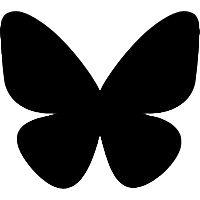OCRA
Online Conservation Restoration Annotator
Overview
Online Conservation Restoration Annotator (OCRA) is a collaborative, web-based tool, primarily designed to help the workflows in conservation-restoration, for managing three-dimensional documentation of CH objects by annotating 3D models. This platform supports a 3D-centric documentation workflow where autoptic observations, information and scientific analysis are referenced in a 3D space to locations and areas on the very surface of digital representations of CH objects.
Using advanced multiresolution techniques, and specialized 3D visualization, it is possible to work on complex, high-resolution 3D assets of cultural heritage objects, enabling the users to annotate directly on detailed geometries from the browser, in a collaborative, multi-user environment. Editing function enables the users to trace spatial annotations onto the geometries of 3D assets with multiple primitives (points, polylines, areas), and then connect these annotations into semantic information. This semantic mapping links spatial annotations to the concepts used in the project and ensures interoperability across tools and institutions. The 3D spatial nature of these annotations makes them metric, enabling an easy and accurate extraction of measurements and statistics. Annotations and mappings can be browsed and presented online interactively, exported as 3D structures to other tools, but also used to generate 2D documentation output.
Feature List
- Work on high-resolution 3D models.
- Web Based collaborative workflow with roles.
- Configurable project environment: user-defined 3D workspace and annotation semantic.
- Annotations have attached metadata, semantics, and hierarchy.
- Semantic mapping of annotations with controlled thesauri for local/national regulations.
- Output of the mapped information as a textual/tabular/image/schemes report.
User Experience
An activity involving the documentation of the status of a mixed material statue is about to start. Maria, the project administrator, sets up the project in the OCRA system by creating a workspace that will allow the various people of the team to work on it with their roles and competences. She finds on the Cultural Heritage Cloud the most recent 3D model of the object of interest and defines the 3D workspace. Then, by using the Cultural Heritage Cloud knowledge base, she prepares the proper dictionaries to be used by the conservators-restorers to annotate the models. Later, her and their teammates will be able to expand the work environment by adding more 3D models for further reference (like for example an historical gypsum copy that was made available by another group) or adding another dictionary to allow proper annotation of the status of the metallic part of the object (that will be studied by a different team).
Anne and Thomas, conservators-restorers from different countries and institutions, log in the platform, using their EU identity. They can, interactively, explore the 3D workspace and see the work done on the objects by their colleagues. Following their role, they add annotations and map scientific information on the objects, using the integrated editor, and consulting the project ontology and the Cultural Heritage Cloud knowledge base.
Herbert, the person in charge of the official institutional documentation of this intervention, accesses the system and generates textual/image offline reports to be sent to the national archives following the current standards and law requirements.
Why on the ECCCH?
The European-wide identity management helps in organizing the work group and managing roles across different institutions and countries.
The Cultural Heritage Cloud Knowledge Base is vital to establish interoperable metadata for the conservation-restoration project. All the annotations need to be mapped into shared semantic concepts, and the terms used in describing the mapped data must come from trusted vocabularies.
Accessing and using the 3D models data already ingested in the Cultural Heritage Cloud, and storing the results of the semantic-rich annotations into the Cultural Heritage Cloud promotes a FAIR approach to 3D documentation. The annotated 3D models become semantic-rich representations of the cultural heritage objects, digital heritage twins that are made available for further study and work, promoting a circular data ecosystem.




![UKRI_Horizontal_RGB[W] UKRI logo with white font](https://www.echoes-eccch.eu/wp-content/uploads/2024/06/UKRI_Horizontal_RGBW-e1721298347860.png)
